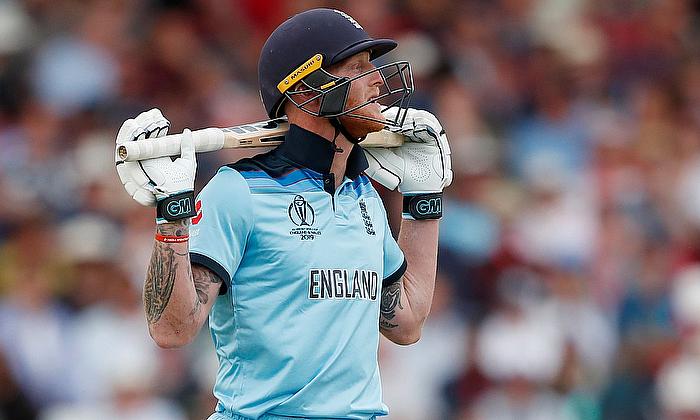Cup Success Secret - Turn Physical Attributes Into Mental Toughness

Imagine the nerve wrecking mission of conquering the highest peak of the world. What exactly does it demand?
Supreme physical fitness, ultimate mental resilience and of course, the technical know how to combat the omnipresent unpredictability during the climb. Possessing these three qualities is a must with a capital M for the team aspiring to lift the ICC World Cup. When Neville Cardous penned his immortals, the word 'fitness' didn't exist in the cricket dictionary.
Then outcome of a match was determined purely on the strength of cricketing skill. In the era of Virat Kohli even a touch artist like David Gower would write in his column the defining role fitness plays in the outcome of a match. Ben Stokes pulled off a blinder in the curtain raiser. It is quality fitness work that launched Stokes in the air to create the magic moment of the reverse cup one handed beauty.
Make no mistake, the winner has to sustain their level of skill for 44 long days with great intensity. Fitness will play a key role in sustaining that intensity. Pundits have short listed England, India, Australia and South Africa as contenders to lift the coveted cup. Let us consider that all four teams are quite even-stevens when it comes to cricketing skills.
Here, while zooming on the favourites we can recall Aussie Cricketing Guru Greg Chappell's observation. Chappell said," when two teams are at par in skill the fitter team on that given day will win." Quite logical but having said that, from the viewpoint of sports science, reaching peak performance at the right time hinges on certain factors. Let's explore them.
- The average age of a team is an important consideration. Older legs will struggle as the tournament progresses, though exceptions like Dhoni remains. Nine matches in round robin league and then the semi final and final makes it eleven matches in 44 days. The equation makes it one match in every four days. The average age of India is 29.5, England 29.2, Australia 30.2 and South Africa 30. Absolutely nothing to choose from. All the nations have thrown in a mixture of youth and experience.
- Have a look at the amount of load absorbed by the teams in the pre competition phase in terms of matches. Both England and Australia took a hiatus during April' 19. Australia played their last international match in March much like England. Both the countries got into World Cup mould in May with matches. Indian players are continuously on the road from January to March for international duty and then till middle of May for the high voltage IPL. Like India, South Africa played international matches till March before embarking on their domestic T-20 from April to May. The joints and muscles of these cricketers must have taken a toll. Ben Stokes, Jofra Archer, Jonny Bairstraw and Joss Butler from England, by playing in the IPL won't be as fresh as the other members. From Australia David Warner and Steve Smith didn't play any international cricket for one year. So their participation in IPL in fact, helped. The likes of Du Plesis, Rabada and Tahir too played the IPL. From this analysis It is clear that both England and Australia will start with most cricketers having fresh legs while India and South Africa are a bit over cooked.
- Now focus on the impact players of these four teams. English skipper Eoin Morgan is currently 33. Other three, Joe Root, Ben Stokes, Joffre Archer are 28, 28 and 24 respectively. An absolute young bunch of impact players with little history of breaking down with injuries. India's chase master Virat Kohli is 30, a role model on fitness. M.S. Dhoni the finisher at 38 is as good as any fit guy in business. Importantly thirty two year old Rohit Sharma has a history of breaking down while Jaspreet Bumraah in his mid twenties is supremely fit. Except for Rohit Sharma there is no cloud over the Indian contingent of impact players. Australia's trump card David Warner at 32 scores highly on fitness. Steve Smith, on the other hand had an elbow surgery a few months back which might trigger heart burn. At twenty nine Mitchel Starc is a genuine match winner. But he has a poor track record on fitness. Pat Cumming, the 26 year old lad in sharp contrast has sorted his injury issues. The backbone of Australia doesn't seem stable. Quinton De Cock, Pfluff Duplessis, Kagiso Rabada and Imran Tahir forms the core of South African team. Tahir at 40 and Duplessis at 34 are not exactly younger legs. Rabada and De Cock in their mid twenties are fit as a fiddle. Facts reveal that on the fitness quotient among the impact players England and India has the edge. Australia and South Africa have some catching up to do.
- Above all these permutation and combination on average age, match loads and fitness of impact players lies another crucial factor. That is the history of having a strong foundation of fitness over a period. This foundation stands in good stead when confronted with niggles or wearing body under pressure. In that count all the teams stands all most at par. Before wrapping it up, look back between 1999 and 2015. Australia dominantly lifted the cup four times during that time. India won it in 2011. The single most discernible feature of the Aussie dominance has been turning the physical attributes into mental toughness. It's an Aussie way of thinking. It says, raise the fitness bar to such a level that your mind is convinced that anything is achievable. I think most teams will take that.
© Cricket World 2019




